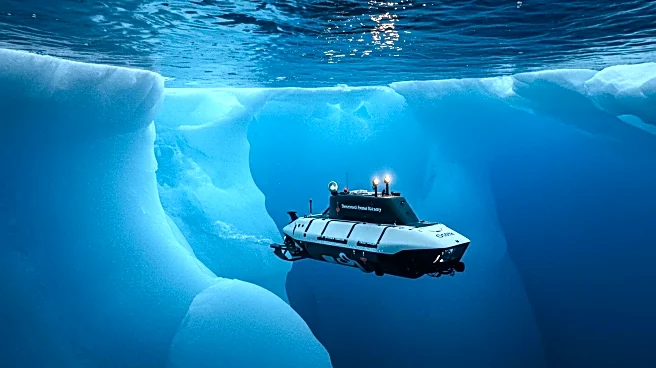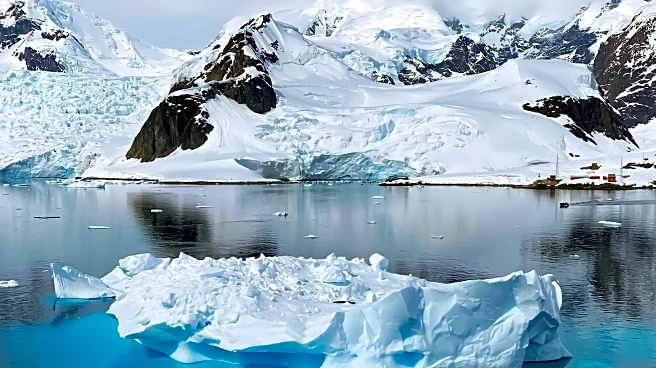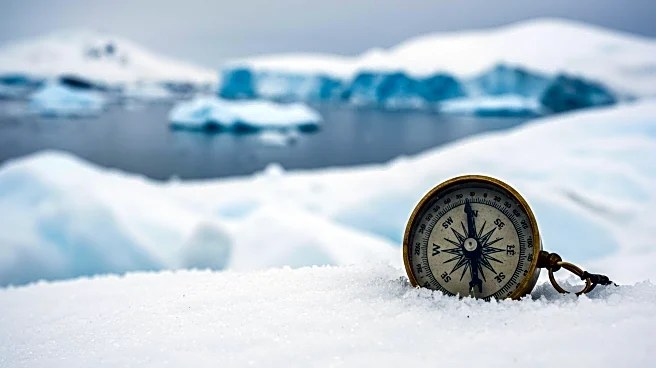What is the story about?
What's Happening?
An international team led by the University of Gothenburg conducted a groundbreaking Antarctic mission using the autonomous submersible Ran. The submersible explored the cavity beneath the Dotson Ice Shelf, traveling over 1,000 km and reaching 17 km into the ice-shelf cavity. This mission provided the first high-resolution multibeam maps of the ice underside, revealing an otherworldly landscape with terraces, steep fracture walls, and teardrop-shaped cavities. These findings challenge existing models of basal melt mechanisms, which are crucial for understanding sea-level rise projections.
Why It's Important?
The data collected by Ran is vital for improving ice-ocean models that predict sea-level rise. Understanding the diverse basal-melt mechanisms can help refine these models, which are essential for designing coastal defenses and setting adaptation timelines. The mission highlights the importance of under-ice autonomous vehicles in delivering detailed ice geometry and ocean measurements, which satellites cannot achieve. This research contributes to more accurate sea-level forecasts, impacting global climate policy and coastal planning.
What's Next?
Future missions are planned to explore deeper penetrations and conduct comparative surveys at other ice shelves. These efforts aim to test the generality of the melt patterns observed at Dotson Ice Shelf. Continued research in Antarctica is expected to uncover more secrets, further reducing uncertainties in sea-level rise predictions.
AI Generated Content
Do you find this article useful?











